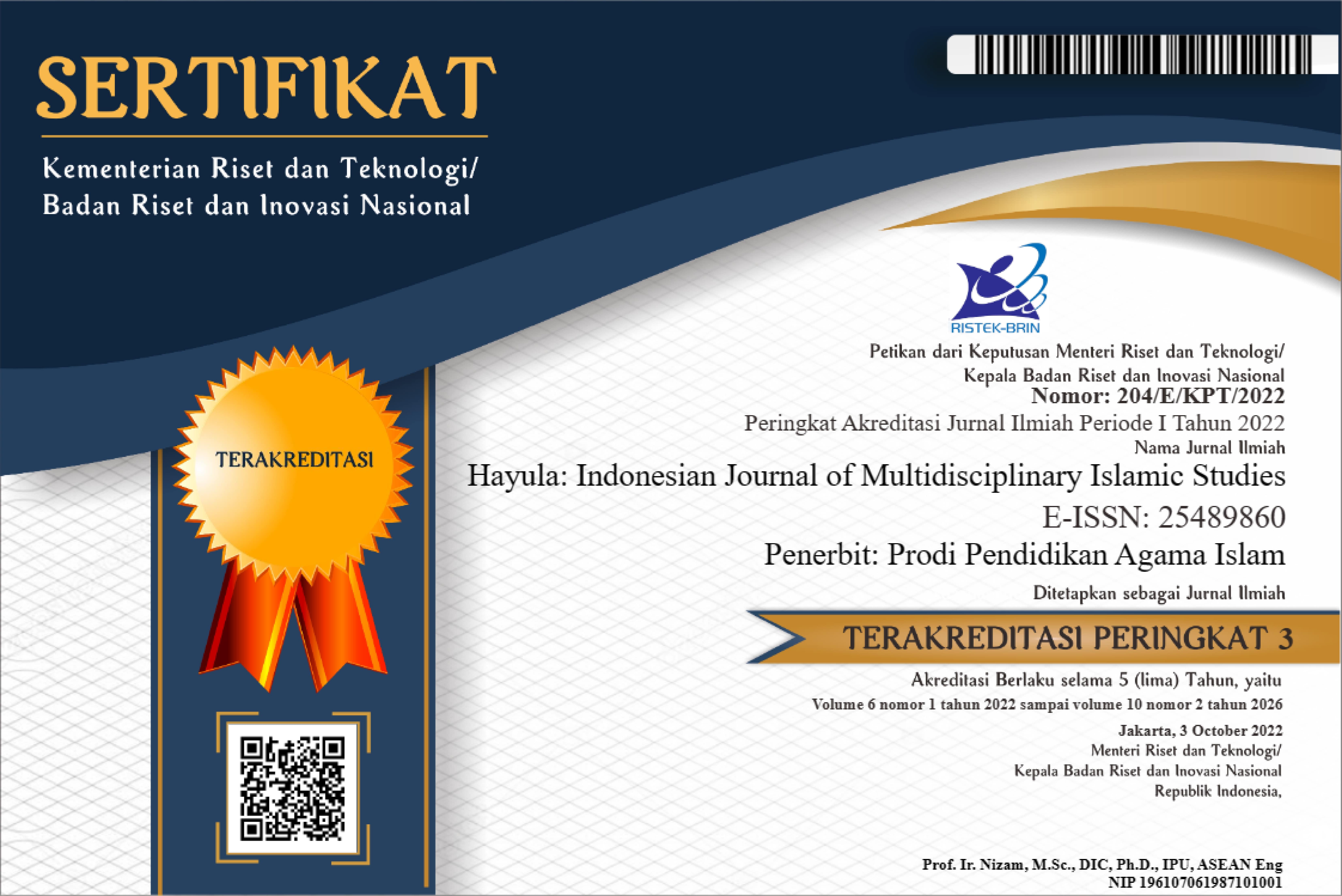Jalan Menuju Tuhan: Revitalisasi dan Interpretasi Makna atas Penciptaan Karya Tari Shirath Nan Tersirat
DOI:
https://doi.org/10.21009/hayula.002.1.06Keywords:
Tari Islam, tari shirath, revitalization, road to God, interpretasiAbstract
This article is an elaboration of the creation of Sirat Nan Tersirat dance which is the result of a revitalization of the cultural phenomenon of Paninggahan people who still believe in mystical matters that is known to contradict the Islamic creed, namely to ask the gods or jin by glorifying a place in Nagari Paninggahan. The purpose of this work is to express a work of dance depicting human characters entering the unseen world and to create a work of dance that reflects the human character who wants to meet his Lord (Allah SWT). The creation of this dance is inspired by the story in the origin of the Adok dance in Nagari Paninggahan when a king (Rajo Bagombak Bagalang Leg, the descendant of Pagaruyuang's king) is possessed when hearing the voice of the singing of the gods. The writing uses two approaches, namely the scienceof dance and Islamic approaches. The choreographer gives reinterpretation, i.e. not a god or jinn that enters the human realm but the man who enters the realm of the jinn. In the process of creating, it tries to reinterpret the Adok dance in accordance with the teachings of Islam and the main theme is the road to God (Sirat).
References
Daryusti. (2001). Kajian Tari Dalam Berbagai Segi. Bukittinggi: CV. Pustaka Indonesia.
Fadhil, A., Sangidu, S., & Manshur, F. M. (2017, January 1). Changes of Religious Behaviours: Sociological Analysis of Literature of The Novel Al-Thaliyâniy By Syukrî Al-Mabkhũt. Jurnal Studi Al-Qur'an https://doi.org/10.21009/JSQ.013.1.01, 13(1), 1-22.
Hadi, Y. S. (1996). Aspek-aspek Dasar Koreografi Kelompok. Yogyakarta : Manthili.
Hadi, Y. S. (2012). Koreografi (Bentuk-Teknik-Isi). Yogyakarta: Cipta Media.
Hawkins, A. M. (2003 ). Mencipta Lewat Tari. Yogyakarta : Mantili.
Kayam, U. (1981). Seni Tradisi Masyarakat. Jakarta: Sinar Harapan.
Kayam, U. (2000). Ketika Orang Jawa Nyeni. Yogyakarta: Galang Press.
Meri, L. (1986). Dance Composition, The Basic Elements, Terj, Soedarsono, Elemen-elemen Komposisi Tari. Yogyakarta: Lagaligo.
Murgiyanto, S. (1992). Koreografi. Jakarta: Departemen Pendidikan dan Kebudayaan.
Sahman, H. (1993). ESTETIKA (Telaah Sistemik dan Historik). Semarang : IKIP Semarang Press.
Smith, J. (1985 ). Komposisi Tari Sebuah Petunjuk Praktis Bagi Guru, Terjemahan Ben Suharto. Yogyakarta : IKALASTI.
Bapak Alamsur (Manti Koto), 2012, Wawancara.
Downloads
Published
How to Cite
Issue
Section
License
Authors who publish with this Journal agree to the following terms:
- Author retain copyright and grant the journal right of first publication with the work simultaneously licensed under a creative commons attribution licensethat allow others to share the work within an acknowledgement of the work’s authorship and initial publication of this journal.
- Authors are able to enter into separate, additional contractual arrangementfor the non-exclusive distribution of the journal’s published version of the work (e.g. acknowledgement of its initial publication in this journal).
- Authors are permitted and encouraged to post their work online(e.g. in institutional repositories or on their websites) prior to and during the submission process, as it can lead to productive exchanges, as well as earlier and greater citation of published works.
Users/public use of this website will be licensed to CC BY







